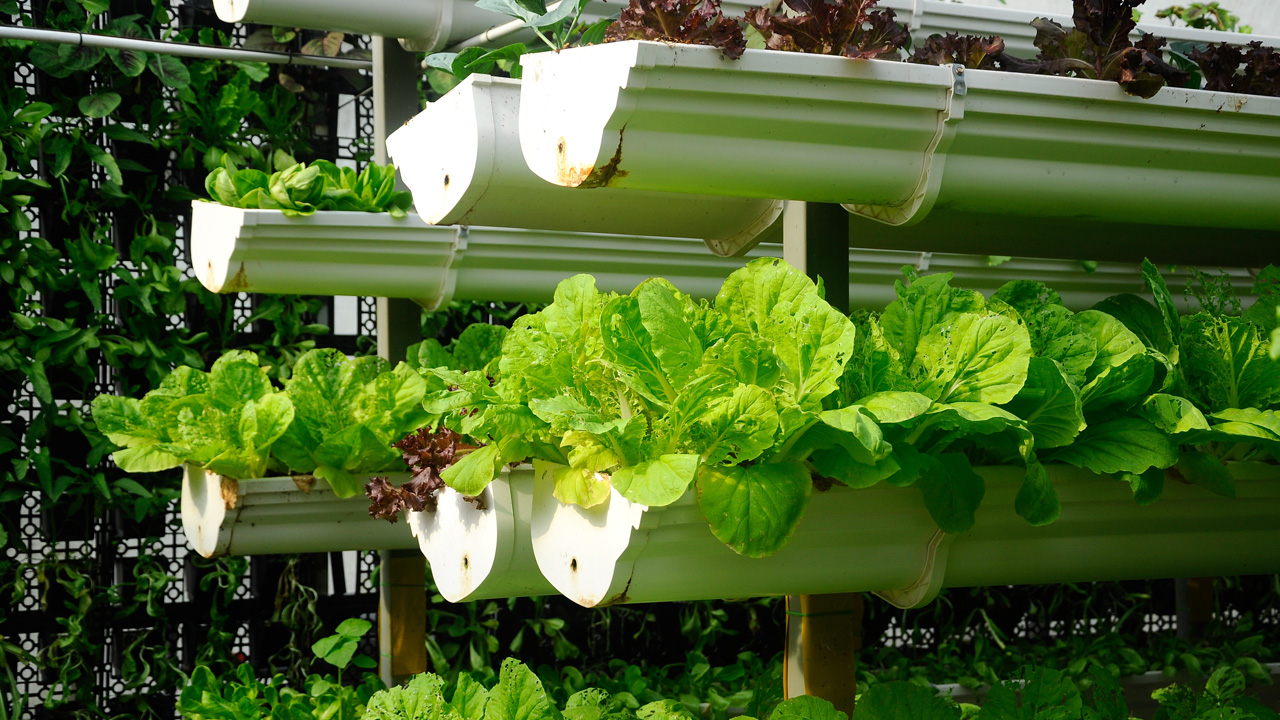Innovative Growing Solutions: Vertical Gardens
Mar 21st 2018
Finding arable land to produce food is at a premium as the population grows. The demand for high quality locally sourced food has caused some small companies to develop some very creative solutions. Repurposing steel shipping containers and using vacant buildings for vertical gardens are two innovative techniques that are beginning to be a part of the answer to our growing demand for fresh produce.

To address the land problem, two of my Alma Mater’s (Northeastern University) alumni, Brad McNamara and Jon Friedman have founded Freight Farms to repurpose steel shipping containers that create a highly effective indoor growing environment that can produce vegetables and herbs using vertical growing methods.

One shipping container (8′ X 40′) contains the equivalent of a 1.8-acre farm. Most farms can get two crops of greens per growing season; a climate-controlled container can grow year-round. It can produce 500 full sized heads of lettuce per week all year long with the growing cycle taking 18-25 days. The 256 seven-foot vertical towers that fit inside add up to 1292 linear feet of growing space for up to 4500 plants. Typical crops usually include lettuces, other hearty greens, and herbs. A single steel container unit requires 20-25 hours of labor each week with the help of a remote environment control system.
Some vertical farms use techniques like greenhouses where natural sunlight is supplemented with artificial lighting and metal reflectors. An essential feature of some modern vertical farms is the integration of renewable energy technology such as solar panels and wind turbines to produce power and be more sustainable. The vertical farm is designed to use (5%-10%) less water to grow a crop than conventional farming.
In 2015 a new indoor agriculture company called AeroFarms leased property in Newark, New Jersey, refurbished a former steel fabrication company’s building, and filled the nearly 70,000 square feet of floor space with a vertical indoor farm. The building’s height gave them room to install grow tables to be stacked 12 layers tall to a height of 36 feet, in rows 80 feet long. This vertical indoor farm grows kale, bok choi, watercress, arugula, red leaf lettuce, and other baby salad greens. When the vertical farm is in full operation, it hopes to ship annually more than a thousand tons of greens!

For AeroFarms, misting the roots of crops grown vertically with a patented nozzle aimed at a patented cloth material that the roots grow into is the way they “irrigate” a crop. The fact that a misting system uses 95% less water than conventional watering methods used on farms today would help slow down the waste and pollution of water that affects the aquatic life of nearby streams and rivers.
Countless algorithm driven computer commands combine to induce the greens to grow night and day so that a plant can go from seed to shoot to harvest in eighteen days. The LED grow lights that are in the plastic tubing above each level of the grow tower or shelves have been stripped of the heat producing part of the light spectrum, thus bringing the energy drawdown. Plants prefer and grow better under the cooler red and blue light. Everything including the temperature, humidity, and CO2 content of the air and so much more are tracked and adjusted automatically as the grow cycle progresses.
The company plans to put similar vertical farms in metropolitan areas all over the US and eventually around the world riding the tremendously popular “grow local, buy local” movement. These days especially during the winter months, greens that come from California are trucked for days to get to the east coast. With AeroFarms being set up in abandoned buildings that will be in many metropolitan areas, “local” produce will soon be available in many cities eliminating most of the transportation costs (dollars and pollution) resulting from trucking.

One must wonder how long it will take for the world to catch on to this fascinating technology. It is a technology that has been tested and fine-tuned to produce a profitable crop near to the consumer no matter what season it is.
Advantages:
- Vertical farms have the potential to reduce or eliminate the need to create additional farmland.
- All season farming multiplies the productivity of the farmed surface by a factor of 4 to 6 depending on the crop.
- Vertical farming is independent of the weather.
- Vertical farming decreases the risk of exposure to toxic pesticides, fungicides, and herbicides by farm workers.
- Vertical farming would allow cities to grow while remaining substantially self-sufficient in food.
To learn more, check out:

